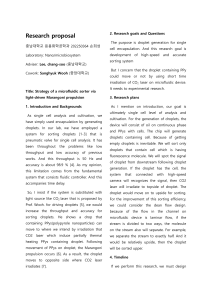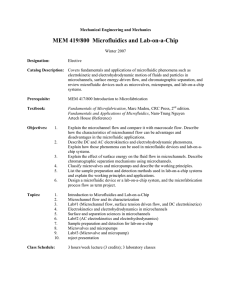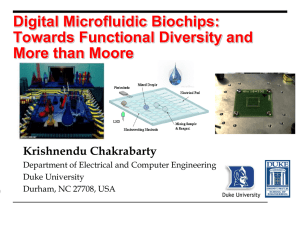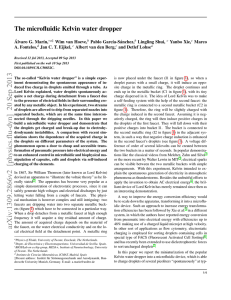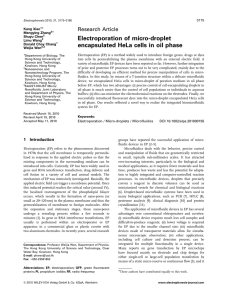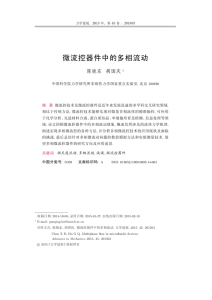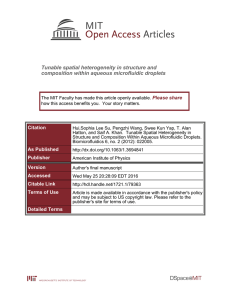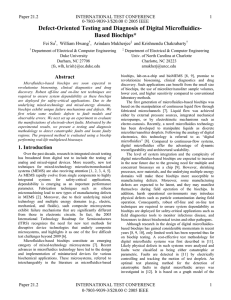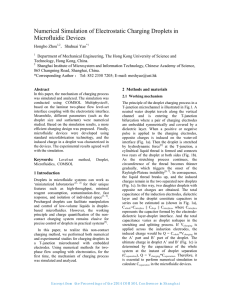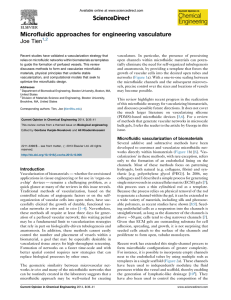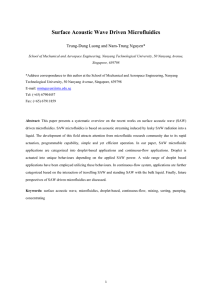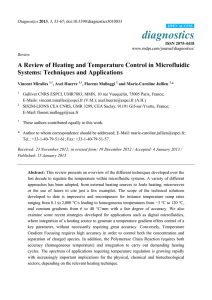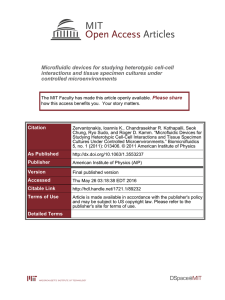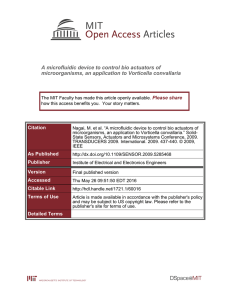Designing droplet based microfluidic devices for lab on chip applications U-R S
advertisement
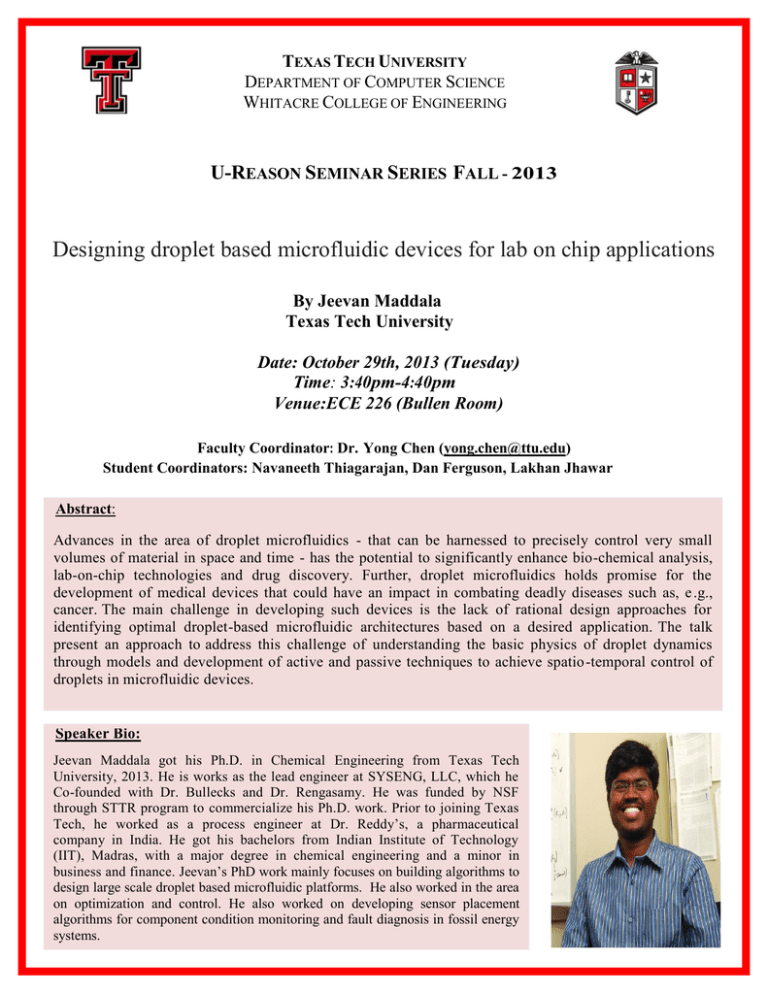
TEXAS TECH UNIVERSITY DEPARTMENT OF COMPUTER SCIENCE WHITACRE COLLEGE OF ENGINEERING U-REASON SEMINAR SERIES FALL - 2013 Designing droplet based microfluidic devices for lab on chip applications By Jeevan Maddala Texas Tech University Date: October 29th, 2013 (Tuesday) Time: 3:40pm-4:40pm Venue:ECE 226 (Bullen Room) Faculty Coordinator: Dr. Yong Chen (yong.chen@ttu.edu) Student Coordinators: Navaneeth Thiagarajan, Dan Ferguson, Lakhan Jhawar Abstract: Advances in the area of droplet microfluidics - that can be harnessed to precisely control very small volumes of material in space and time - has the potential to significantly enhance bio-chemical analysis, lab-on-chip technologies and drug discovery. Further, droplet microfluidics holds promise for the development of medical devices that could have an impact in combating deadly diseases such as, e .g., cancer. The main challenge in developing such devices is the lack of rational design approaches for identifying optimal droplet-based microfluidic architectures based on a desired application. The talk present an approach to address this challenge of understanding the basic physics of droplet dynamics through models and development of active and passive techniques to achieve spatio -temporal control of droplets in microfluidic devices. Speaker Bio: Jeevan Maddala got his Ph.D. in Chemical Engineering from Texas Tech University, 2013. He is works as the lead engineer at SYSENG, LLC, which he Co-founded with Dr. Bullecks and Dr. Rengasamy. He was funded by NSF through STTR program to commercialize his Ph.D. work. Prior to joining Texas Tech, he worked as a process engineer at Dr. Reddy’s, a pharmaceutical company in India. He got his bachelors from Indian Institute of Technology (IIT), Madras, with a major degree in chemical engineering and a minor in business and finance. Jeevan’s PhD work mainly focuses on building algorithms to design large scale droplet based microfluidic platforms. He also worked in the area on optimization and control. He also worked on developing sensor placement algorithms for component condition monitoring and fault diagnosis in fossil energy systems.
